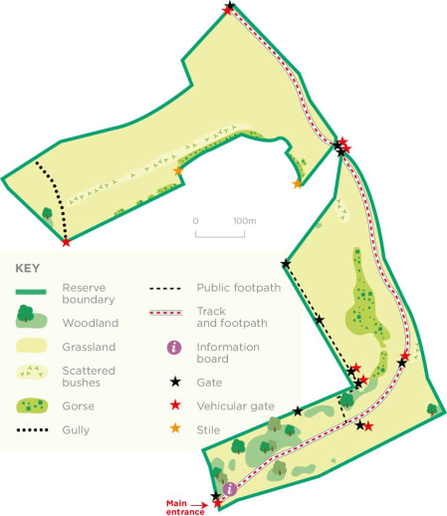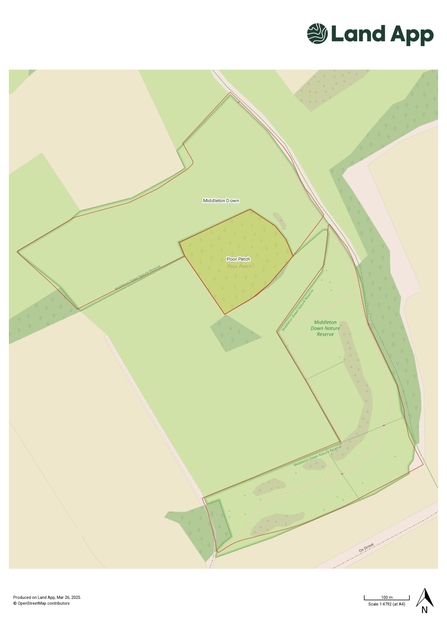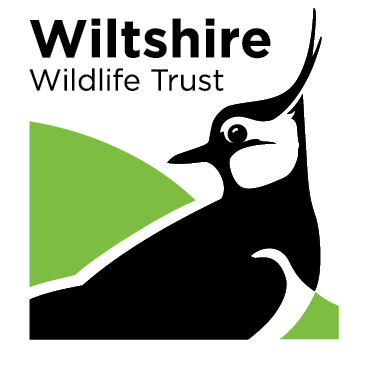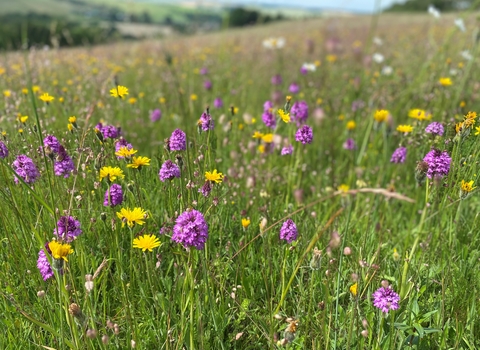
Middleton Down nature reserve in Wiltshire. Credit: Steve Day.
Middleton Down
Location
Know before you go
Dogs
See our FAQ's for more information
When to visit
Opening times
Open at all timesBest time to visit
Spring and summer. Nearby attractions include Rockbourne Roman Villa (7 miles), Larmer Tree Gardens (8 miles), Edmondsham House (8 miles).About the reserve
The curves and dips of this peaceful and secluded reserve in the Chalke Valley offer stunning views across the countryside. The reserve is a wonderful example of the traditional chalk downland that was once widespread in Wiltshire and is designated a Site of Special Scientific Interest due to the rich variety of its grassland plants.
From May early purple and other orchids blossom on the slopes - common spotted, fragrant, pyramidal, bee, frog and autumn lady’s-tresses. Here too are clustered bellflower and the nationally rare dwarf sedge. Its many butterflies include the rare Adonis blue, common blue and marbled white. Most are attracted by the trefoils and vetches that provide food for their caterpillars.
On late summer evenings glow worms sparkle on the slopes. These are not worms at all, but beetles. The wingless females glow for a few weeks to attract the flying males, only to die soon after laying their eggs. Look out for a large, shiny oil beetle in early spring, or the narrow-bordered bee hawkmoth – a day-flying moth, which looks like a bee. Listen for the rustle of grasshoppers at ground level and the pure notes of the skylark above.
The reserve is grazed by our own Dexter cattle, giving us flexibility to vary the grass height to be best for insects. Since we acquired the reserve in 1988 biodiversity has increased. Grazing also prevents invasion by scrub and coarser vegetation.
Species
Habitat
Contact us
Environmental designation
Map of Middleton Down


Produced on Land App, Mar 26, 2025 © OpenStreetMap contributors
Acquisition of Poor Patch
Following our Turtle Dove Appeal in 2024, Wiltshire Wildlife Trust were delighted to secure the acquisition of Poor Patch, next to Middleton Down, in spring 2025.
This land is near to a site where turtle doves have been spotted and is thought to be suitable for the birds to move into. The mixed habitat of scrub and grass will also provide ideal breeding conditions.
Turtle doves are a critical indicator species in Wiltshire, and an iconic farmland bird that is strongly associated with historical agricultural practices.


